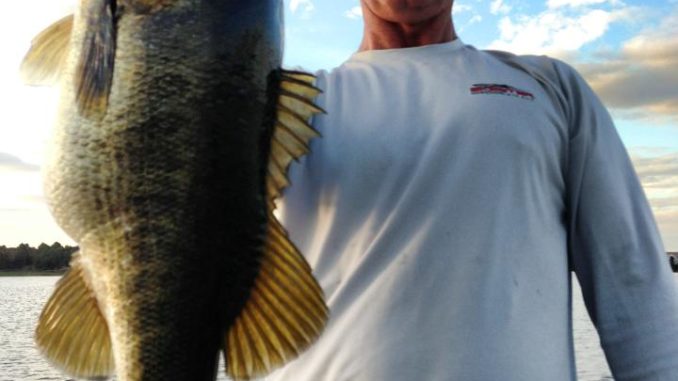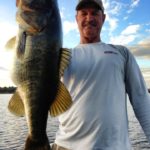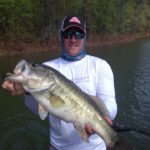
As bass approach the spawn in South Carolina lakes and rivers this month, swimbaits become go-to baits for many anglers. Here’s why….
Largemouth bass will be in various stages of the spawn across South Carolina this month, and no matter which stage they’re in, swimbaits are excellent lures for anglers to use. One of the keys to their effectiveness is their versatility and ability to imitate natural forage.
Prespawn bass will eat heartily, getting ready to go through the reproductive cycle, and they are apt to hit a swimbait. Bass on the bed will often strike at baitfish in an attempt to keep them from eating their eggs or disrupting their nest. Post-spawn bass are usually hungry from their spawning activity and will again eat heartily.
Throughout all stages of the spawn, bass are accustomed to seeing baitfish. Matching the hatch — using lures that look like resident baitfish — is important.
Al Odom of Chapin, director of the Fishers of Men tournament trail and a veteran Lake Murray angler, loves to fish swimbaits in the early spring.
“This is a great time of year for throwing swimbaits,” he said. “It’s a very versatile lure in that it can be fished at a variety of speeds and depths. You can cover the entire water column just by varying your retrieve speed, using different sized jigheads, and changing the size of your swimbait.”
Odom said while swimbaits will catch plenty of bass in March, on certain days, they are equally effective as searching tools.
“I always look at using swimbaits as hunting as much as fishing,” he said. “These lures have a drawing power that will get fish to expose themselves, even when they are not actively feeding. Especially this time of year, they will follow these lures and often blow up on them, even if they don’t take them all the way into their mouths. There is just something about these lures that makes fish at least chase after them.”
One of Odom’s favorite places to cast swimbaits in March is around docks lined up heading into protected coves. A lot of bass will stage there before moving in to the shallows to spawn.
“The water is pretty clear in a lot of lakes this month. Certainly Lake Murray is, and that’s a good thing,” Odom said. “I like to cast where I can still see my lure underwater throughout the whole retrieval … so I can see bass that might follow the lure just a short way but not bite, which is common some days.
“That’s just as important to me as catching them, because once I know they are present, I can always cast another lure in there if they aren’t biting the swimbait. It also lets me see the size of the fish so I’ll know whether it’s worth it to keep fishing that spot.”
Casting swimbaits to bedding bass can also be effective. Usually, these bass will either hit the lure or follow it, just like they do around the docks.
“When you throw that lure to fish on the bed, they will come up and boil on it, and again, if they don’t grab the lure, they’ll at least show themselves. So you’ll know where they are, and have a good idea of their size,” said Odom, who usually uses a 5 1/2-inch, Strike King Shadalicious swimbait on a 1/8- to 3/4-ounce Buckeye J-Will swimbait jighead, depending on conditions.
“You can fish swimbaits fast enough that they make a wake on the surface, or slow enough that they’ll get down to submerged cover in 25, 30, even 40 feet of water. And you can hit every depth in between, just by changing how fast you’re reeling. And this month, swimbaits will catch bass at all those depths.”
Odom likes to use medium-heavy, 7-foot-6 or 7-foot-10 baitcasting rods when fishing swimbaits. He matches them with Pflueger Patriarch baitcasting reels with 6.3-to-1 or 7.1-to-1 gear ratios and spools them with 15-pound Berkley fluorocarbon, which offers a good mix of strength and invisibility. The exception is fishing multiple swimbaits on Alabama rigs, which Odom said can be deadly this month. In that case, they’ll need to use a heavy action rod and 40- to 60-pound test line.
“I use reels with a pretty fast ratio, but I don’t usually burn it. You can slow the rate of your retrieve, but these reels do have the speed when you decide you need it,” Odom said.






Be the first to comment